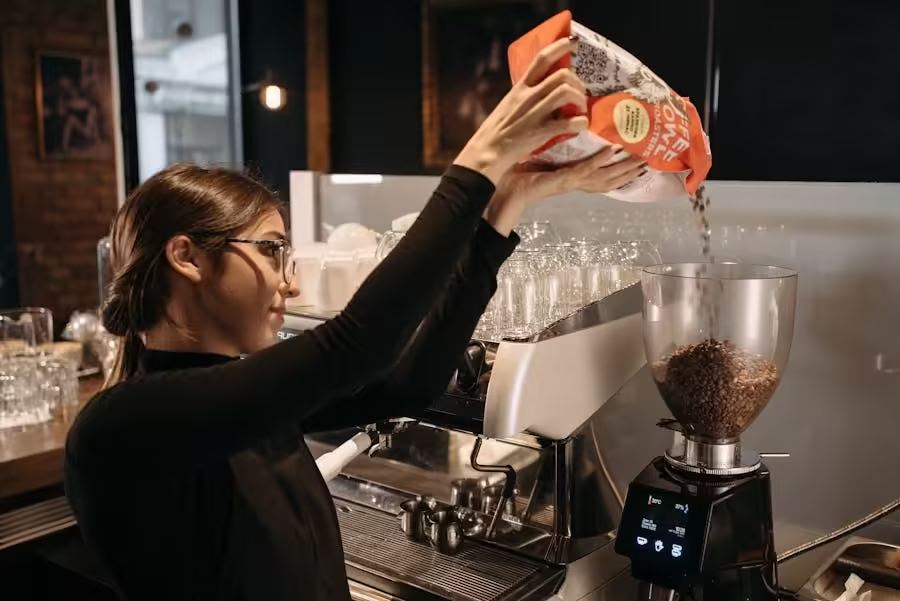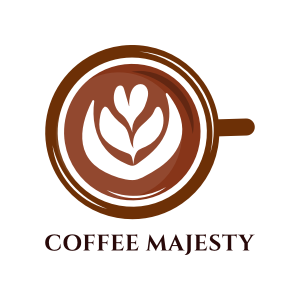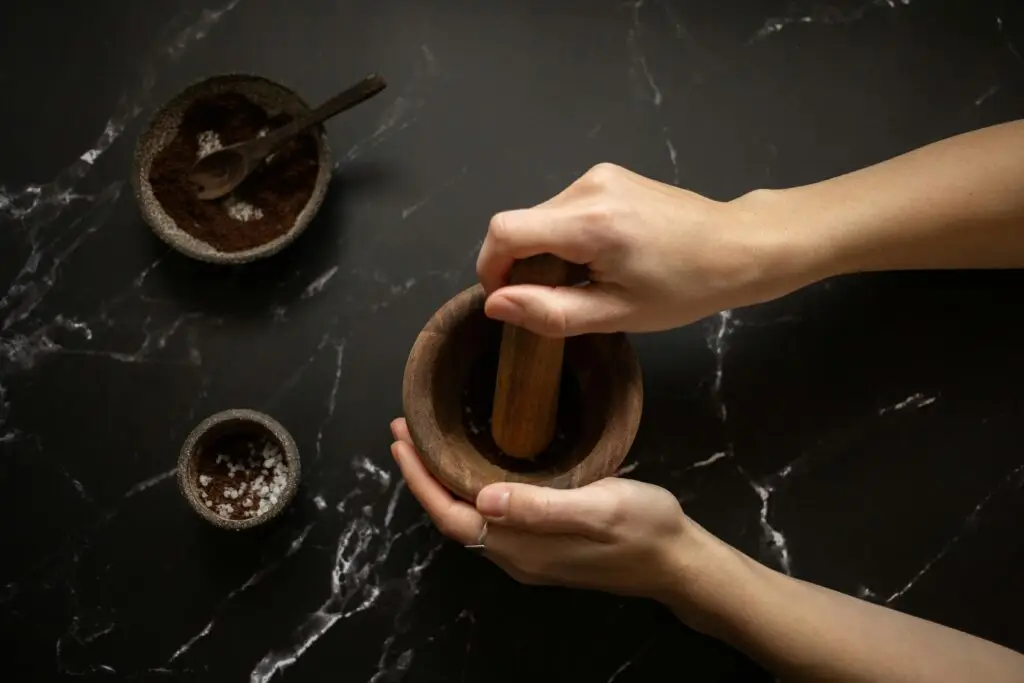If you’re not grinding your own coffee beans, you should start right away because it’s one of the cheapest and easiest ways to make a cup of coffee that tastes great every single day. The coffee bean itself is a wonderful thing, but we can’t just chuck our coffee into some water and expect it to taste great. We need to grind the coffee into smaller particles so that the water can extract all of its flavor.
Despite using the best quality coffee beans and brewing equipment, almost 90% of coffee lovers fail to brew a perfect cup of coffee because they overlook a crucial factor that determines the taste of their coffee: freshly ground coffee. Let’s start with what happens when you grind coffee beans and why we grind coffee beans in the first place.
Why is grinding important?
The most important reason to grind your own coffee is that it’s the best way to enjoy it at its best. Freshness plays a crucial role in the process of grinding coffee. By smashing the beans into small pieces, you create a large surface area that allows water to penetrate, dissolve the flavor, and infuse it into your cup of coffee. However, as soon as you grind the coffee, oxidation causes it to lose most of its flavor, and the aromas gradually diminish and turn stale. Unbelievably, just 15 minutes after grinding, your coffee will become stale and lose over 60% of its aroma. Therefore, if you purchase pre-ground coffee, it has already lost most of its flavor. So, I advise you to grind your coffee beans fresh each time you want to make coffee, so that the excellent smells and tastes of the coffee beans enter your cup.
Understanding Grind Size Based on Different Brewing Method
One of the many ways to improve the quality of your final cup is to buy whole beans and grind them fresh just before brewing. When it comes to grind size, size really does matter in terms of the coffee, especially when the particle size of the ground coffee can affect your extraction and the overall quality of your daily cup of coffee. So, here’s a detailed overview of different grind sizes in terms of different brewing methods to see what suits you best.
Extra Coarse: An extra coarse grind is best for cold brew coffee, as the brew method doesn’t require much surface area to fully extract the flavor from the grounds.
Coarse: For a french press, a coarse grind is best; minimizing as many fines as possible will result in better extraction for your coffee.
Medium fine: A medium fine grind is a good start for pour over coffee. For most cone shaped pour overs like V60, Kalita and Beehouse medium fine is the best settings to start experimenting with.
Fine: A fine grind is best for espresso, which is the faster and quicker extraction of coffee, and the water is in contact for a very short time before it goes into the cup.
Extra fine: An extra fine grind is needed for Turkish coffee.
Different types of grinders
It’s really hard to talk about grind size without talking about the grinders. Now, I’m sure you’re familiar with the coffee grind. There are two types of grinders out there: Burr grinders and Blade grinders. The overall goal of a grinder is basically to give you a consistent grind size so we can unlock the really good stuff. So, let’s just get grinding, folks.
Blade grinder: Blade grinders are compact, easy to use, and inexpensive. Blade grinders are basically spinning blades that cut or chop your coffee. You don’t need to do a lot of things to grind your own coffee; you just need to hold the button and do a little bit of dancing with the machine every now and then, because with a blade grinder, it’s harder to get that consistency, as you’ll get some very large pieces that you don’t want and some super fine pieces that you probably don’t need.
It’s not that a blade grinder will make a bad cup of coffee, but it’s more difficult to achieve that consistency and to decide on a specific grind size.
Burr grinder: Burr grinders are the gold standard in the coffee industry, though they are a little pricey compared to blade grinders. Many people prefer burr grinders for their consistency and hands of grinding. Burr grinders have two metal like rings called burrs that spin against one another to crush the beans, resulting in consistent and even grinding. Though there are a lot of people who say their blade grinder works just fine, But if you want your coffee to taste as good as it should, I think you need to invest in a decent burr grinder.
How to grind coffee beans with a grinder
I think the main reason so many people don’t grind their coffee is that they think grinding their own coffee is much harder and more expensive than it actually is, which takes us to the next point: how to grind coffee beans? The real straightforward answer to that question is that you only need whole coffee beans and a good grinder.

1) Measure the beans:
Depending on how much ground coffee you need, pour the desired amount of coffee beans into the grinder. You basically need 12.5 grams of whole beans for each 6-ounce cup. You can use a kitchen scale for more accuracy. While filling the beans into the grinders, leave a tiny bit of room at the top of the bowl because the beans can easily overflow and fall out once ground. It’s essential to experiment and find the correct ratio of coffee to water for your preferred taste.
2) Choosing grind size and grind method:
Depending on the method that you’re going to use when you’re making coffee, you’re going to utilize different grind sizes to get the best results. For example, if you want to make french press coffee, you’re going to use a very coarse grind size, whereas if you’re making espresso, you’re going to use a finer grind. So, if you have a grinder, you’ll be able to make all these different types of coffee just by controlling the grind size and preferred brewing method.
3) Brew and Enjoy:
Achieving a proper grind size might be a little overwhelming at times, but if your coffee tastes too bland or sour after brewing, you need to make some adjustments to your grinding. It’s essential to experiment and find the correct ratio of coffee to water for your preferred cup of Joe.
The coffee goes a long way to be on your shelf, from farmers to roasters. Now it’s your job to make sure you honor their efforts and make great coffee. So, you definitely have to grind your own coffee, do whatever it takes to make a fresh, exotic brew, and contribute to a richer coffee experience.


Pingback: 3 Easy Methods of Making Espresso at Home Without a Machine
Pingback: How to make iced coffee at home – Explore the World of Coffee
Pingback: How to make a perfect iced latte in 2 ways!
Pingback: Espresso vs Coffee: Understanding the key differences